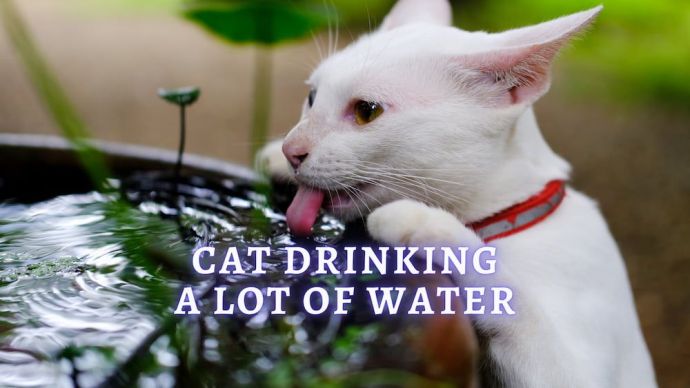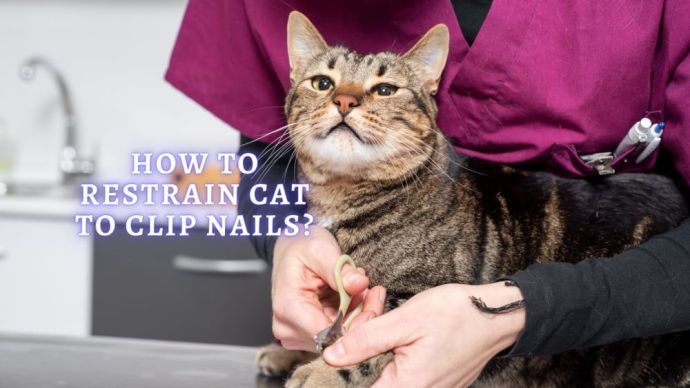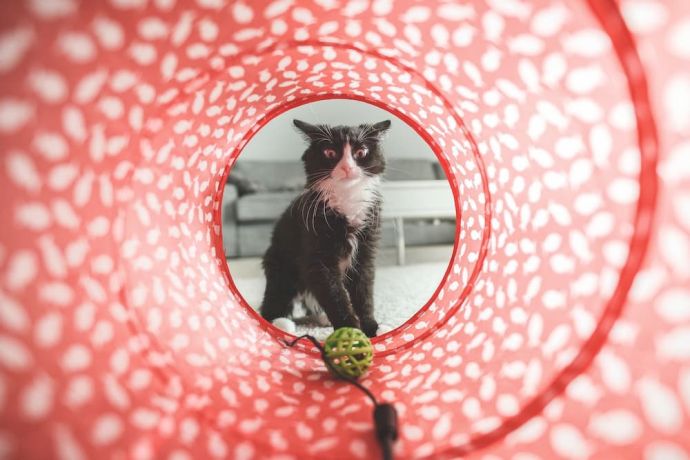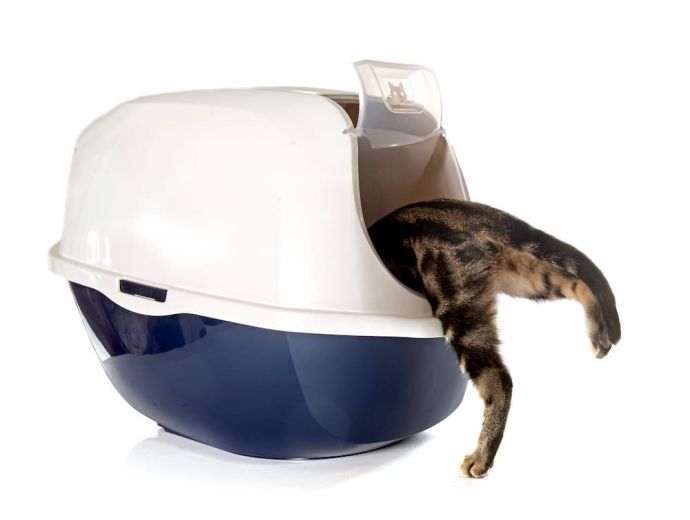Can Cats Swim? Teach a Cat to Swim in 10 Steps
Written by:
Author: Vicki Smirnova
Vicki Smirnova is a professional writer and editor who adores animals and helps readers get along well with their pets. She has been working in digital media for more than 5 years and has great experience writing content about lifestyle, including pets. Vicki specializes in dog health and nutrition, cat feeding, dog training. She is an aquarium lover and is passionate to write about fish care at home. Also, Vicki headed several websites and worked as a news editor.
View all 245 articlesLearn about our editorial process and veterinary review board.
Viewed: 259
Updated on: 05/12/2023
Cats are independent and mysterious animals. One of their exciting features is a chronic intolerance to water. However, this is not since cats can not swim. Most cats are skilled swimmers from birth, but they are still in no hurry to get into the bath. Many cats dislike water, but the exact reasons for this continue to remain a mystery to experts.
TOP reasons why Cats don’t like to Swim
The Canadian Veterinary Medical Association (CVMA) offers the following theory: “One of the reasons for the dislike of water may be related to the fact that most breeds originated in the deserts of the Middle East, where water is a rare phenomenon. This fact is ingrained in their minds at the genetic level. Wild cats stay away from water. Throughout their early history, cats did not have to deal with rivers and lakes, and, as a result, their acquaintance with water is not as close as in some other evolving species.” [5]
1. Water makes a pet’s coat heavy
Your furry friend is very picky about its fur. Wet wool burdens the pet, creating inconvenience for animals, and may not dry out for a long time. Cats, always diligent in their hygiene, spend about a third of their waking hours washing, the CVMA notes. Wet wool makes this activity very difficult. The fur quickly gets wet, weighing down the body and depriving them of their innate dexterity and speed. A wet cat becomes a less effective hunter and easier and more vulnerable prey for predators. [1]
2. Previous negative experiences
If a pet has had a negative experience, especially as a kitten, it will be even more afraid of water. If the pet was bathed using force, or caught in heavy rain, it will take a long time to convince the animal not to be afraid of water. So be patient!
3. They don’t like the smell
Cats are also very sensitive to odors, so your pet may not like the smell of chemicals present in tap water. The situation is even more complicated if you use shampoos full of unfamiliar smells.
4. They don’t like being cold
There is an air layer between the cat’s skin and its fur, which plays an important role in the body’s thermoregulation. Wet fur ceases to protect the pet from the cold. The same air cushion protects the animal from overheating, not allowing the scorching sun rays to heat the skin. In addition, dust, dirt, and various kinds of bacteria stick to wet fur, which subsequently enters the stomach tract of the animal. The dry hair of pets is covered with a special substance that protects the hair from breakage, making it luxurious and shiny. Water decreases the wool, worsening its condition.
READ MORE: Best Vet Approved Cat Shampoos
Breeds of Swimmer Cats
There are some breeds of cats that like to swim in the water. Of course, this is atypical behavior for domestic cats, but you should not be surprised if your pet shows interest in the water. We have collected eight breeds that like water. But if your pet is afraid of water, you should not force it. Even among these breeds, there may be exceptions.
- Turkish Van — According to the International Cat Association, these animals “have a unique texture of cashmere wool, which makes it waterproof and allows pets to enjoy swimming and other water games.” [2]
- The Abyssinian is the most energetic breed. Abyssinians love to walk, play, swim — they are constantly on the move. They are incredibly curious, so they always keep their master company, no matter what they do.
- Bengal — Bengals love to play in the water. If you have an aquarium, you should be extremely careful, since Bengals love fishing.
- American Shorthair – These pets have no fear of water; on the contrary, they swim perfectly. This applies not only to adults but also to kittens.
- Maine Coon — These giants like water and swim with pleasure. In addition, they are brilliant and, like dogs, even know how to memorize commands. [3]
- Turkish Angora — These cats are not afraid of water and swim perfectly. They are curious and active. They are suitable primarily for single people.
- Norwegian Forest — These animals are curious and are happy to spend time on the street. For them, the ideal home is a country house with its own territory. And if there is a pool, then do not be surprised to see your pet in it: these pets swim perfectly.
- Japanese Bobtails — Cats of this breed are excellent swimmers. “It is a well-muscled, solid pet with the power and grace of an athlete,” according to The International Cat Association. [4]
Big cats living in the wild (lions, tigers, jaguars, ocelots) are excellent swimmers. In addition, what kind of prey the cat hunts plays a role. If domesticated cats hunt mainly birds and mice, they simply do not need to go into the water, unlike big cats.
Also, you may notice that although it doesn’t like being wet, it likes to play with water. Whether pets catch water droplets from the tap in the bathroom, drink from the home fountain, or try to put its paw under the shower, the pet thinks only about fun and games (provided that it does not get too wet). Experts suggest that a cat prefers running water to standing water. Dripping water “is a magnet,” Animal Planet reports in a study about the feelings of pets. In addition, it is possible that its instincts associate running water with fresh streams, from which it is safer to drink in the wild than from a puddle.
Can you teach your Cat to Swim?
Cats are practically impossible to train, so they should get acquainted with the water without shouting and pressure from your side. Instead, your endurance – and a lot of patience – are simply necessary. Otherwise, it may permanently abandon water procedures. It is necessary to teach a pet to swim in several stages:
1. Comb kitty’s fur
Before bathing, do not forget to comb the pet carefully. Comb the fur efficiently to untangle it and remove dust and litter, especially if your pet is long-haired. Dry tangles are much easier to comb out than wet ones, and getting rid of them will prevent unnecessary irritation of the animal during bathing. Combing also allows you to untangle the matted wool, which can be difficult to wash with soap and leads to irritation of the skin, causing itching and focal peeling.
RELATED: Combing and Brushing Your Cat
2. Trim the nails
Also, before bathing, it is necessary to trim the cat’s claws so that it does not scratch you and its claws do not cling to your clothes or towel and do not get stuck in them. You will also need to plug the pet’s ears with a cotton ball to protect them from water. If the pet does not allow you to insert cotton balls into its ears, do not insist – skip this operation and, after bathing, wipe the animal’s ears dry with a cotton pad.
RELATED: How to Restrain a Cat to Clip Nails?
3. Start slowly
Do not immediately throw the pet into a full bath. Start with a small volume of water; for example, a couple of glasses full, which will only slightly cover the bottom of the bathing vessel. The water should correspond to the cat’s body temperature.
4. Walk little depeer
Lower the pet into the water. Let it get used to the water – walk in it, maybe even drink it. That is why you do not need to add any detergent to the water. To achieve a positive result more quickly, you can put a toy in the basin. It will distract the pet’s attention.
5. Let them get used to it
At first, the cat may jump out of the water. Be patient, this is normal. Gradually, the pet will get used to the new environment and will no longer be afraid of bathing. If the pet has started to get used to the water, then gradually add a couple of glasses with each water procedure. As a result, the water level should be such that the pet’s paws barely reach the vessel’s bottom. You can put a toy in the water every time.
6. Be patient
If you want to teach your cat to swim in a natural pond, then you will have to be patient. This option is much more difficult than the first because the water training will take place in an open area (on a lake, river). Make sure that there is nothing nearby that could frighten the cat.
7. Right moment is important
Choose a moment when the cat will be in a good mood. Do not force the pet to get into the water. Let it get used to a new place, sniff the bushes and the water along the water’s edge. It will be quite enough for the first time that the pet gets acquainted with the river’s surroundings. The second time, you can allow the pet to slightly wet its paws, but do not force it to go into the water. For the third time, you can get directly to the swimming itself. Throw the toy into the water. Next time, throw the same toy farther away so that the cat, trying to get it, enters the water. And so it is every time. Throwing the toy farther and farther, it will eventually swim after it.
8. Make it interesting
If the toy does not help, then a treat that your cat loves can serve as an excellent alternative (and, by the way, a favorite treat provides faster results than a toy). You can also use any other object that creates small waves on the water: a twig, a thread, or a simple stick. You just need to hold the object on the water, creating waves to attract the cat’s attention to the water.
9. Is it time yet?
You can teach a cat to swim in the water if you let another cat into the water, which already is not afraid to swim. Otherwise, the pet may be very scared.
10. Do not give up!
If the training has failed, do not worry – continue the classes next time. Give your pet a rest. With any success, even the most insignificant, be sure to praise your furry friend – do not forget to give it a treat. By doing this, you encourage it to make more and more progress. The cast deserves praise.
Of course, to teach a cat to like water – and even more so, to swim – is a very long and difficult task. But, having gained patience and experience, you can easily teach your cat to swim, not only in the bath but also in an open pond.
FAQs
Why cats are afraid of water?
Most cat breeds originated in the deserts of the Middle East, where water is a rare phenomenon. In addition, wet wool burdens and inconveniences a cat and may not dry out for a long time. Between the skin and the fur of cats, an air layer plays an important role in the body’s thermoregulation. Wet fur ceases to protect the cat from freezing.
Are house cats good swimmers?
All cats swim well, but most do not really like it. Cats can stay perfectly on the water. They can overcome reservoirs and hunt in them. In certain situations, when something threatens their lives, they will be able to jump into a pond and swim normally.
Do cats drown in swimming pools?
Cats are excellent swimmers. Most likely, if a cat gets into a pool, it will easily jump out. Animals can swim from the age of a kitten. This skill was developed in the process of evolution and is associated with survival.
Can cats hold their breath underwater?
Intentionally, cats can’t hold their breath for a long time. A reflex, called the mammalian diving reflex, will not allow cats to drown when they accidentally find themselves underwater. The reflex gives the cat enough time to come to the surface.
Do all cats hate water?
Some breeds of cats like to swim in the water (Maine Coon, Turkish Van, Abyssinian, Bengal, American Shorthair, Japanese Bobtails, Turkish Angora and Norwegian Forest). Thus, do not be surprised if your pet shows an interest in water.
Article Sources:
- “The Near Eastern Origin of Cat Domestication.” US National Library of Medicine National Institutes of Health, ncbi.nlm.nih.gov/pmc/articles/PMC5612713/.
- “Turkish Van.” Animal World, animal-world.com/Cats/Natural-Breeds/TurkishVanCat.php.
- “Maine Coon Cats.” Animal World, animal-world.com/Cats/Natural-Breeds/MaineCoonCat.php.
- “American Bobtail Breed.” TICA, 13 Aug. 2018, tica.org/breeds/browse-all-breeds.
- “Why Do Cats Hate Water?” CVMA , canadianveterinarians.net/documents/why-do-cats-hate-water.
 Cat Veterinary Tips Skin Allergies in Cats: Causes, Symptoms, and Treatment (Vet Advice)
Cat Veterinary Tips Skin Allergies in Cats: Causes, Symptoms, and Treatment (Vet Advice) - 513
- 0
 Cat Care Cat Drinking a Lot of Water: Health and Behavior Reasons Why Your Cat Drinks So Much
Cat Care Cat Drinking a Lot of Water: Health and Behavior Reasons Why Your Cat Drinks So Much - 425
- 0
 Cat Care Why Does My Cat Attack My Legs? 10 Reasons Why and What To Do About It (Vet-Approved Advice)
Cat Care Why Does My Cat Attack My Legs? 10 Reasons Why and What To Do About It (Vet-Approved Advice) - 45566
- 21
 Cat Veterinary Tips Cat Stomach Gurgling: Vet Advice on Why is Your Cat Stomach Gurgling?
Cat Veterinary Tips Cat Stomach Gurgling: Vet Advice on Why is Your Cat Stomach Gurgling? - 35340
- 4
 Cat Veterinary Tips My Cat Lost its Voice: Can Cats get Laryngitis? (Vet Advice)
Cat Veterinary Tips My Cat Lost its Voice: Can Cats get Laryngitis? (Vet Advice) - 23247
- 13
























